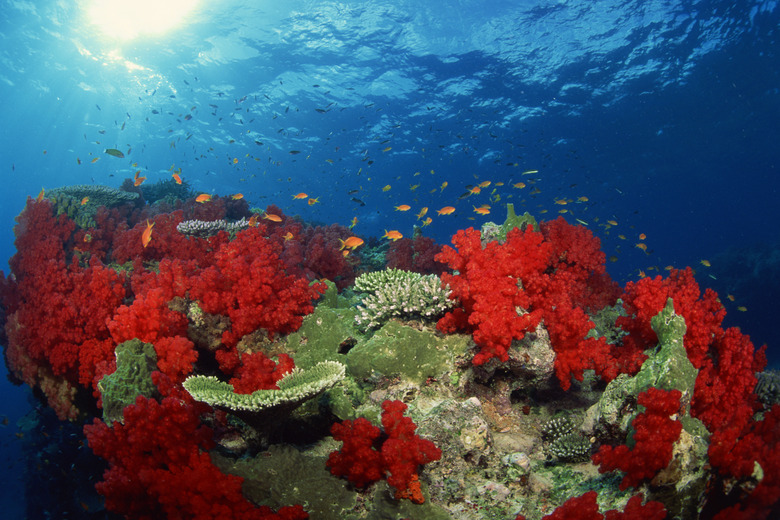How To Protect The Ecosystem
An ecosystem is any geographical area where biotic factors (living organisms such as animals, plants, fungi and bacteria) interact with abiotic factors (such as soil, air, water and temperature) in the environment. The first step to preserving ecosystems is to remember that you are part of them. Preserving ecosystems starts at home. Everything you use in your daily life impacts the environment, from the cellphone you use to the food you eat and the clothes you wear.
Conservation Practices to Save the Ecosystem
Conservation Practices to Save the Ecosystem
There are no strict lines on where an ecosystem starts and ends. Classic examples of ecosystems include oceanic kelp forests, coral reefs, mangroves, the Amazon rainforest and the Arctic tundra. However, ecosystems are everywhere, from your gut microbiome, backyard and local park to the entire planet. To start preserving the ecosystem, take a moment to think about how you interact with your environment.
Save Water
Save Water
Water is a vital commodity in every ecosystem. Did you know that leaving the tap running while brushing your teeth uses around five gallons of water? You can save water every day by doing things like turning off the tap while you brush your teeth, fixing leaky faucets, taking shorter showers and watering plants with the cooled water used to boil vegetables rather than pouring it down the drain.
Conserve Energy
Conserve Energy
Unless you're planning to live completely off grid, you're going to need to use electricity. Creating simple habits like turning off lights and appliances when they're not being used will add up. In winter, reduce your need for heaters by adding an extra blanket to your bed at night and closing doors to rooms not being used. When buying appliances, opt for energy-saving models.
Make Smart Food Choices
Make Smart Food Choices
Buy local, in-season produce and organic where possible. Farmers' markets are a great place to shop locally. You could also grow your own vegetable garden. This not only reduces your carbon footprint by minimizing the distance your food travels but is healthier as fruits and vegetables lose nutrients the longer they are in storage.
Start Composting
Start Composting
Composting organic matter reduces landfill waste and creates healthy soil to feed your garden. You can use many easy compositing systems at home, including bokashi bins, worm farms and composting tumblers. Look for a local curbside or drop-off composting program if you don't have a green thumb or a garden.
Try Eco-friendly Products
Try Eco-friendly Products
Shop for products that don't use harmful chemicals either during their manufacture or in the actual product themselves. Eco-friendly personal hygiene products and cosmetics have the added benefit of being better for your health as skin is the largest organ in the human body and highly absorbent. Additionally, help reduce landfill waste and excess rubbish by selecting reusable items rather than disposable.
Environmentally Friendly Packaging
Environmentally Friendly Packaging
A big part of what makes a product eco-friendly is its packaging. Today, compostable and biodegradable packaging is becoming more popular. There are also many shops and supermarkets that allow you to bring your own container to fill rather than getting a new container each time.
Recycle to Lower Waste
Recycle to Lower Waste
Recycling takes an item and reuses it for the same purpose it was intended or breaks it down into its base material for reuse. Recyclable packaging is a much better option than single-use packaging that will end up in a landfill, however, the effectiveness of recycling depends on local facilities. You can also recycle packaging yourself. For example, clean jars and fill them with your own salad dressings or preserves or save boxes for when you need to mail presents to friends.
Upcycling Into New Goods
Upcycling Into New Goods
Upcycling reuses discarded items or materials in a way that gives them a higher value than the original item. For example, if you don't need any more jars for the kitchen, you can give them a new purpose by decorating them and making cute vases or plant holders. Think about upcycling furniture by adding a fresh layer of paint or replacing fabric covers. Upcycling clothing is popular for creating unique fashion items or refreshing old and beloved clothing.
Rework Your Clothing
Rework Your Clothing
Buy clothing from transparent, slow-fashion companies that value environmentally friendly practices such as using organic fibers or recycled polyester from plastic bottles, and intentionally minimizing fabric waste. A cheaper option is to donate to and shop at second-hand stores. Additionally, make your clothes last longer by sewing or patching small holes and washing only when they need it, rather than washing after one wear.
Volunteer for a Cause
Volunteer for a Cause
Thousands of volunteer groups around the world spend their free time working to preserve local ecosystems. Joining native planting projects or participating in rubbish cleanup days helps restore and rebuild natural habitats to support thriving ecosystems. Some wildlife monitoring projects don't even require you to leave your home. Collecting wildlife count data from your backyard or reviewing conservation camera footage provides precious data about animal distribution for restoration projects.
Cite This Article
MLA
Jerrett, Adrianne. "How To Protect The Ecosystem" sciencing.com, https://www.sciencing.com/how-to-protect-the-ecosystem-12221148/. 30 September 2021.
APA
Jerrett, Adrianne. (2021, September 30). How To Protect The Ecosystem. sciencing.com. Retrieved from https://www.sciencing.com/how-to-protect-the-ecosystem-12221148/
Chicago
Jerrett, Adrianne. How To Protect The Ecosystem last modified August 30, 2022. https://www.sciencing.com/how-to-protect-the-ecosystem-12221148/
